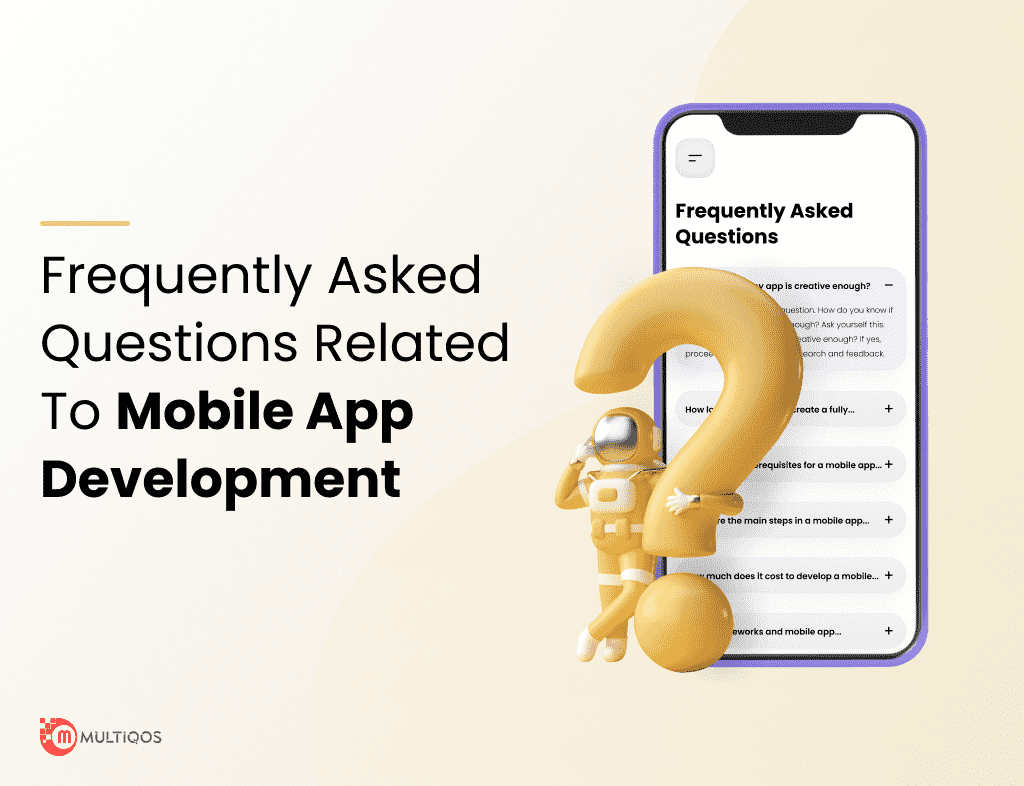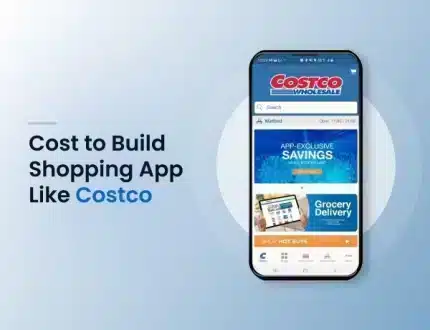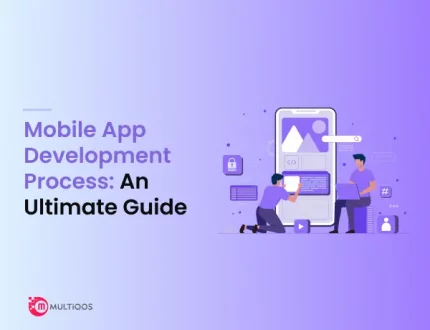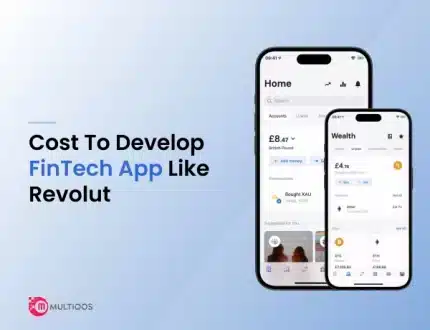Top 20 Frequently Asked Questions About Mobile App Development

-
What are the steps involved in the process of mobile application development?
The key steps to building a mobile application are listed below.
-
- Define the problem statement and the solution around it.
- Do the market research and determine if there are users for the applications and competitors if any.
- Layout the features and functionalities of the mobile application.
- Design a wireframe to create a prototype of applications with the user interface.
- Select the application development framework and platform.
- Develop the User Interface and application graphics.
- Design the backend APIs and architecture to interact with data.
- Do the unit testing of the beta application.
- Launch applications on marketplaces and app stores.
- Regularly update the mobile applications.
-
How much time does it take to develop the mobile application?
For any mobile application development, the time taken is completely different as it depends on factors like the complexity of the applications, features to integrate, how big is the team, and the resources available. On average, it almost takes months to years to build a complete mobile application with all the features. You should note down that time taken for development is based on market research, design and development, testing, and the final launch of the application. Sometimes it can take extra time for bug fixes or additional feature integration.
-
What is the difference between hybrid mobile application development and native application?
Native mobile application development is completely limited to one platform such as Android or iOS. Such mobile applications are developed using programming languages such as iOS, Objective-C, or Swift. Native Mobile applications take more time and resources to develop.
Hybrid Mobile applications can run on any platform using one common codebase. Such mobile applications are built using languages like javascript, CSS, and HTML. Hybrid mobile applications are quite easy to develop but they are not better performing applications as compared to native mobile applications.
-
What is the role of the Project Manager in the process of Mobile Application Development?
A project manager oversees the development of complete mobile applications from market research to regular updates. They help to design the project goals and their scope in the market, create certain timelines and milestones for the development team, and coordinate with clients and developers to ensure that all the features are implemented and the project is on budget. Also, it is responsible for managing the risks and problems that might arise while the development of the application.
-
What is the Minimum Viable Product and why is it so important for mobile application development?
A minimum viable product is the basic version of the mobile application to test the viability of the project in the market among the users. This helps to test certain features and functionalities of the applications and make enhancements based on customer feedback. Also, further developers can take informed decisions about which features to work on first and optimize the application user interface and user experience.
-
How to choose the best Mobile Application Development Platform?
For choosing the correct mobile application development platform there are several factors to consider such as the features, functionalities, resources, budget, and time for development. Some of the commonly used platforms for mobile application development are iOS and Android. Most of the time hybrid mobile application platforms are used like PhoneGap and Xamarin. Just for example, if you lack resources and budget then you can choose a hybrid mobile application development platform, as it would minimize the need for resources since one single codebase can be used for mobile application development.
-
How to choose the correct features for mobile applications?
Selecting the correct features is quite important for you, as this will help you stay focused towards to aim behind building the mobile application. Before you start coding, it is quite important to least the core features. This is highly dependent on the target audience and the type of problem you are trying to solve. To begin with, it is good to create a list of core features that your app must offer and which will add the greatest value to the users. Once you have the core list, you can prioritize them based on the requirements of the users. You need to decide which are essential to have and nice to offs. All the nice-to-haves features can be added later on once essential features are added.
-
How to handle mobile application translation and localization?
Translation and localization are quite important to consider while developing a mobile application as they will be used in different regions where different languages are spoken. Some of the strategies you can use to handle localization and translation of mobile applications are given below.
-
- Choose the translation management system to manage the consistency across different languages and simplify the translation process.
- Utilize several translation memory tools that can be useful for future updates or translations.
- Make proper guidelines and instructions for the translators to ensure that different translations are accurate and appropriate to the target audience.
- After implementing localization and translation, test your applications to ensure that functionalities are working fine.
All these steps would help you to ensure that your mobile application is accessible to different regions and languages.
-
How to handle third-party libraries and API integrations?
Integrating mobile applications with different APIs or services can help you to add some additional features and value to your mobile application. However, it is important to do due diligence before you integrate any service so your application is secure and reliable. Some of the steps to handle application integration with APIs or services are the following.
-
- Do the proper research and understand their features and functionalities.
- Determine how the APIs or services can be integrated. For example, in the case of HTTP API, should you use HTTP API request directly or make some library for the same?
- Do complete testing and ensure all the functionalities are working properly and do not negatively impact the performance and reliability of the application.
- Regularly monitor the integration and ensure it is up to date-and working seamlessly.
-
How to optimize the application performance and testing?
The most crucial part of mobile application development is testing and optimizing performance. This helps you to ensure that your application works well on any device and platform. Some of the ways you can optimize the application and testing are the following.
-
- Identify the loopholes and areas of optimization in your mobile applications. Some of the tools and techniques it might involve are load testing, benchmarking, and many more.
- Optimize the app architecture and code to ensure that your app’s performance is up to mark. Some of the steps you can take are reducing the total number of external requests, minimization of memory and CPU resources, optimize the algorithms used in the application.
- Test on different devices and operating systems to ensure it works fine across any configuration.
- Do regular updates and monitor your application after launch to ensure all the performance issues can be fixed on time. You can take regular feedback from clients, analyze crash reports, and implement updates based on them.
-
How to generate revenue and monetize the mobile application?
You can implement different strategies and implement technologies to monetize and generate revenue from the mobile application. Some of them are listed below.
-
- Subscription Model: This involves regularly charging your application users based on the content they access.
- Advertising: you can use services like google ads to display advertisements within the app and generate revenue based on impressions and clicks.
- Freemium model: This is offering the basic feature for free and paid premium features or content.
- In-app purchases: Selling the content, features, and functionalities within the applications. For example, most the mobile applications.
-
How to handle app promotions and marketing?
Marketing and promotions are crucial aspects of mobile application development, this helps you to increase the visibility of the mobile application. Here are some of the strategies that you can implement to promote your mobile application.
-
- Offline marketing and PR- you can attend conferences and trade shows to showcase what you have built. Also partner with some companies or organizations to generate some media coverage.
- Use social media applications and other online channels to build an effective marketing strategy to promote your app and reach out to potential users.
- Optimize your application for the app store listing: create the best screenshots and descriptions using the optimized keywords for the best reviews and ratings for your mobile applications.
- Design a proper marketing plan by identifying the correct set of audiences and making a timeline for promoting your application after the launch.
-
How to regularly update your mobile application and do version control?
Managing and updating the different versions of applications can be a daunting task sometimes. Here are some of the tips that you can consider to do version control and app updates.
-
- You can create a timeline for releasing regular updates, identifying what new features or functionalities should be included for each app based on the resources and time available.
- Use Version control software such as Mercurial or Git to track the versions and manage progressive changes to the mobile application codebase. This will help you to easily collaborate with the development team and allow multiple developers to work on the codebase.
- Test updates end to end it is quite important to test your application before you release it to ensure all the features and functionalities are working properly and no new bugs are introduced.
- Communicate all the updates to users so they can take the necessary actions on time. You can realize the changelogs, and release notes to inform about the changes included.
-
How to maintain the application infrastructure and scalability?
Infrastructure and scalability are two important factors to consider while building a mobile application. Your application’s performance is highly dependent on them. If you are building a mobile application for large volumes of users then your application performance should be up to mark and able to handle that much of users simultaneously. Some of the strategies to handle the infrastructure and scalability are the following.
-
- Consider the long-term scalability plan in the upcoming future. This may involve mobile application architecture in a certain way that should allow the application to easily scale as the number of users might increase.
- Use different cloud services like Microsoft Azure, and Amazon Web Services to make a scalable infrastructure that can handle a huge chunk of data and users. Also, it would ensure that your application is stable and performs well as users increases.
-
What are the important things to consider while application deployment and distribution?
Deployment and distribution are the last two steps after you develop the mobile application. This is basically about the launch of the app to different app stores and distribution mediums. Some of the necessary things to consider are —
-
- Find the best medium for distribution. There are a lot of choices available that can help you to make your application reach out to audiences such as google play store, Apple app store, etc.
- Follow the rules and regulations for each distribution medium. Each distribution medium has its guidelines that an application owner needs to follow else they won’t be able to list the application.
- Always do different types of testing before the deployment- you should test your application before you deploy it for the end users and ensure that it meets certain guidelines for distribution channels. Some of the tests you can do are stress testing, user testing, and much more.
- Regularly update your application if any new feature needs to be added or for bug fixes.
-
How to handle the app regulation and compliance.
Regulation and compliance with regulations are quite important to consider before you start application development. There might be some laws or regulations that your application should comply with. Some of the strategies to follow to handle application regulation and compliance.
-
- Do the proper research and understand the guidelines and laws that you should apply for your application. Some of them are protection laws, privacy laws, and industry-specific regulations.
- Follow the best practices when it comes to regulation and compliance. For example, you should adhere to PCI DSS or HIPPA.
- Get certain approvals or certifications based on the nature of the applications.
- Update and monitor the application compliance to ensure that you still meet the relevant standards.
All these steps can help you to ensure that your mobile application is compliant with certain laws and regulations, moreover meets industry standards.
-
How to implement application analytics and metrics tools?
To identify certain areas of improvement and user behavior, it is quite important to implement analytics and metrics for the mobile application. There are a lot of analytical tools available that can help you to track the application performance and user behavior such as Mixpanel or google analytics.
Also define KPIs or Key Performance indications that are relevant to your mobile applications such as cost per acquisition, revenue per user, user retention, and much more. Such KPIs would help you to provide the correct image of your application’s performance and key areas for improvement.
Further, you can analyze the data of the application to identify trends and patterns. Also, you implement machine learning algorithms to conduct some analysis or make some decisions.
-
How to implement app security and privacy?
Security and privacy are two important factors to consider while developing a mobile application. Since your application would be using certain APIs and connected to the Internet, it might be prone to hacks. Hence you should always implement the best security practices like those given below
-
- It is quite essential to implement security measures to protect users’ data and applications from any cyber-attacks. You can use secure data storage, secure authentication, and encryption for best security practices.
- Follow the guidelines defined by GDPR( General Data Protection Regulation) and CCPA( California Consumer Privacy Act) to ensure that your application is compliant with certain privacy laws and that users have their privacy rights.
- Also regularly monitor your application and implement the latest security measures so your application is secured and up to date.
-
How should you handle app development project management and collaboration?
While application development, it is quite important to ensure that the management and collaboration among different developers and teams are properly aligned. This helps to ensure that the mobile application is developed effectively and efficiently. Some of the tips and strategies you should use to handle project management and collaboration are the following.
-
- A lot of project management tools and methodologies are available that you can use for application development projects such as Kanban, Scrum, Agile, and much more. You should always choose such tools wisely.
- Collaborate with different teams such as developers, designers, and project managers so your application is developed in a coordinated and synchronized manner.
- Regularly update and improvise your project management strategies to make sure the application is built on time.
-
What steps one should consider for ethical and societal implications for the mobile application?
Once your mobile application gains some popularity, you must begin o work on the ethical and societal implications of mobile application development. A few of the strategies you can follow are the following.
-
- Consider the impact of your mobile application, if it’s negative or positive. You should ensure that your app has a risk of addiction or impact on user privacy.
- Follow certain guidelines and standards for the mobile application development process such as the ACM(Association for Computing Machinery) Code of Ethics or IACSIT(International Association of Computer Science and Information technology) Code of ethics.
- Engage is regular discussions with users, policy makers, and industry experts to ensure that all the concerns are re-addressed and you have gained knowledge about others’ perspectives.
If you still have questions about mobile app development, our team of mobile app experts is here to help. Reach out to us today and we’ll provide answers to all of your inquiries.
Want to Grow Your Business with Mobile App?
MultiQoS is a leading mobile app development company that offers end-to-end customised mobile application solutions to startups, SMBs, & enterprises.
Get In Touch




